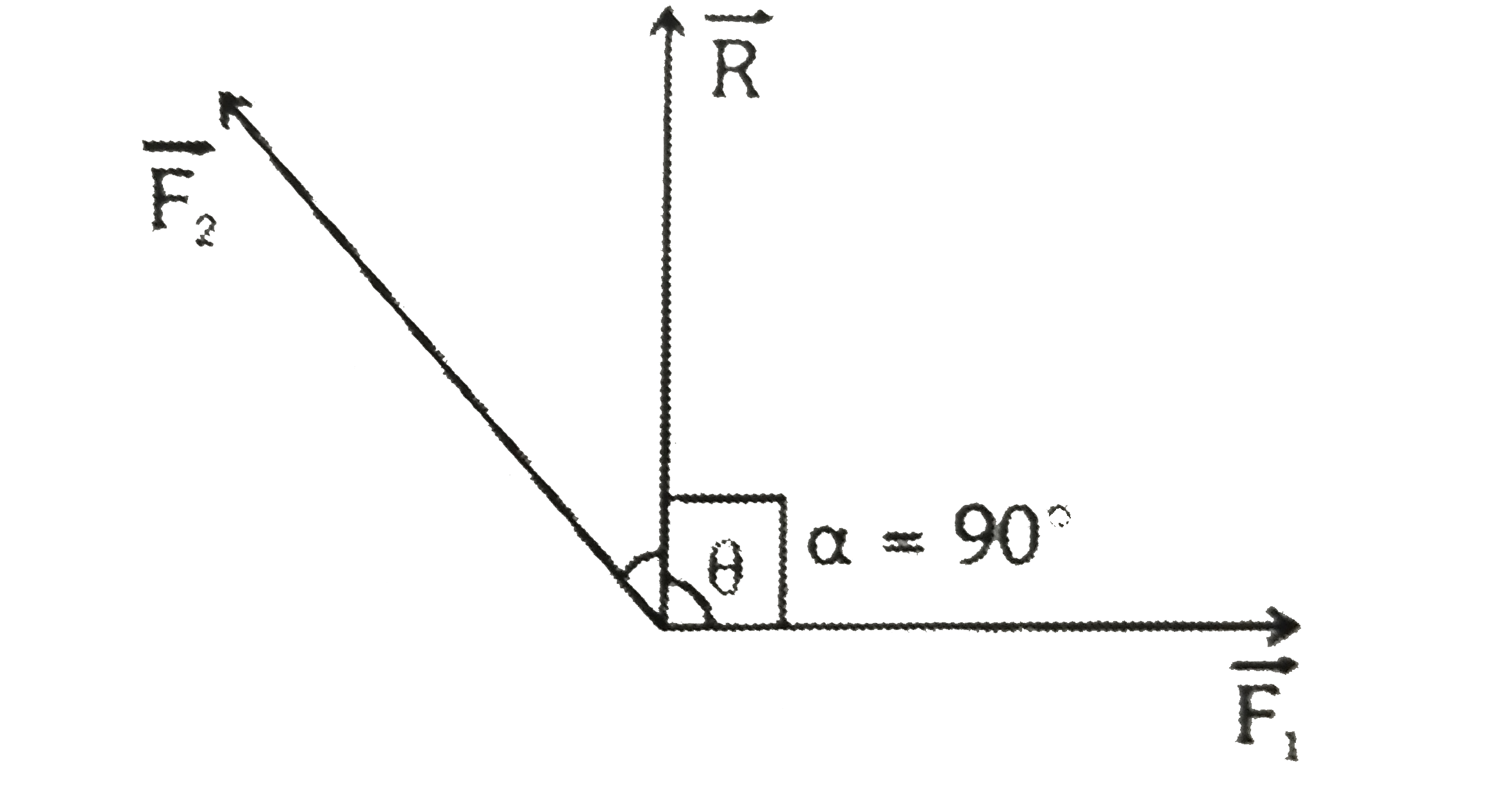The sum of two forces is 18 N and resultant whose direciton is at right angles to the smaller force is 12 N. the magnitude of the two forces are
6N & 10N
8N & 8N
4N & 12N
2N & 14N
The correct Answer is:1
F1+F2=16 ...(i)
8=√F21+F22+2F1F2cosθ
⇒F21+F22+2F1F2cosθ=64 …(ii)

tanα=F2sinθF1+F2cosθ=tan90∘=∞
F2cosθ=−F1 ...(iii)
Solving (i), (ii) and (iii) ⇒F1=6N,F2=10N
Topper's Solved these Questions
- BASIC MATHEMATICS USED IN PHYSICS &VECTORS BOOK - ALLENCHAPTER - BASIC MATHEMATICS USED IN PHYSICS &VECTORS EXERCISE - EXERCISE-IV ASSERTION & REASON
11 Videos
- BASIC MATHEMATICS USED IN PHYSICS &VECTORS BOOK - ALLENCHAPTER - BASIC MATHEMATICS USED IN PHYSICS &VECTORS EXERCISE - EXERCISE-II AIPMT/NEET & AIIMS (2006- 2018)
6 Videos
- CENTRE OF MASSBOOK - ALLENCHAPTER - CENTRE OF MASSEXERCISE - EXERCISE-V B
19 Videos
Similar Questions
Two forces are such that the sum of their magnitudes is 18N and their resultant is 12 N which is perpendicular to the smaller force. Then the magnitude of the forces are
View SolutionThe sum of two forces at a point is 16N. if their resultant is normal to the smaller force and has a magnitude of 8N, then two forces are
View SolutionThe sum of two forces at a point is 16N. if their resultant is normal to the smaller force and has a magnitude of 8N, then two forces are
View SolutionVector sum of two forces of 10N and 6N cannot be:
View SolutionVector sum of two forces of 10N and 6N cannot be:
View SolutionSum of magnitudes of the two forces acting at a point is 16N if their resultant is normal to the smaller forces and has a magnitude 8N then the forces are .
View SolutionSum of magnitude of two forces is 20 N and magnitude of their resultant is 10 N. If resultant is perpendicular to the smaller force find values of both forces.
View SolutionThe resultant of two forces at right angles is 13N. The minimum resultant of the two forces is 7 N. The forces are
View SolutionThe sum of the magnitudes of two forces acting at a point is 16 N. The resultant of these forces is perpendicular to the smaller force has a magnitude of 8 N. If the smaller force is magnitude x, then the value of x is (A) 2N (B) 4N (C) 6N (D) 7N
View SolutionTwo forces are such that the sum of their magnitudes is 18 N, the resultant is √228 when they are at 120∘. Then the magnitude of the forces are
View Solution
